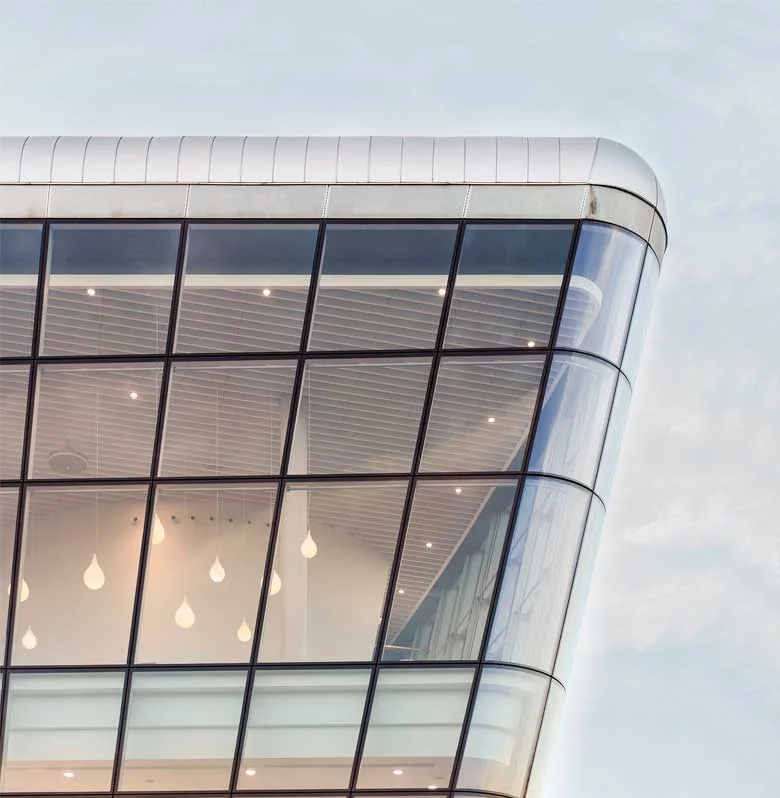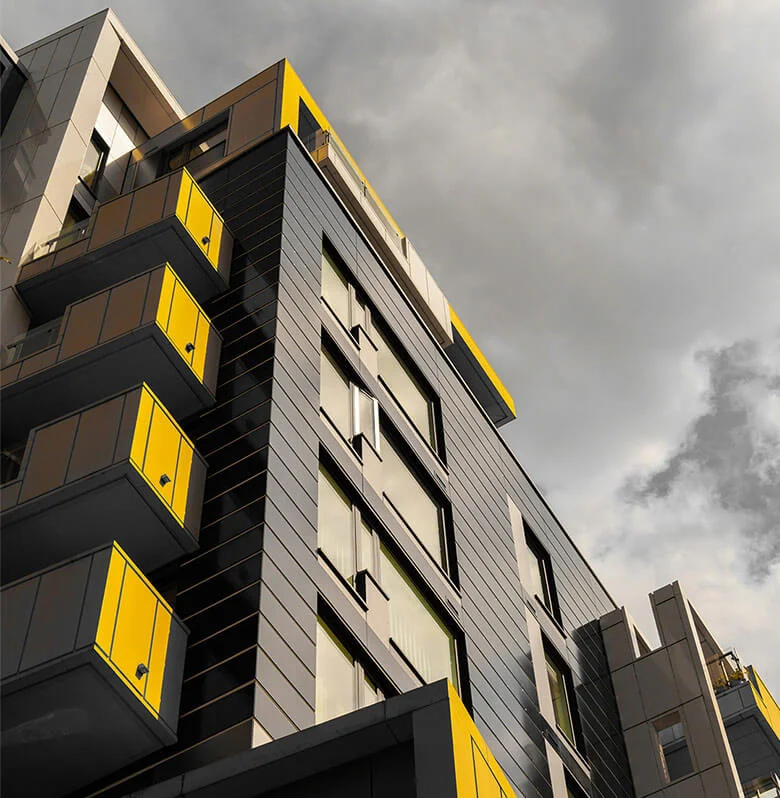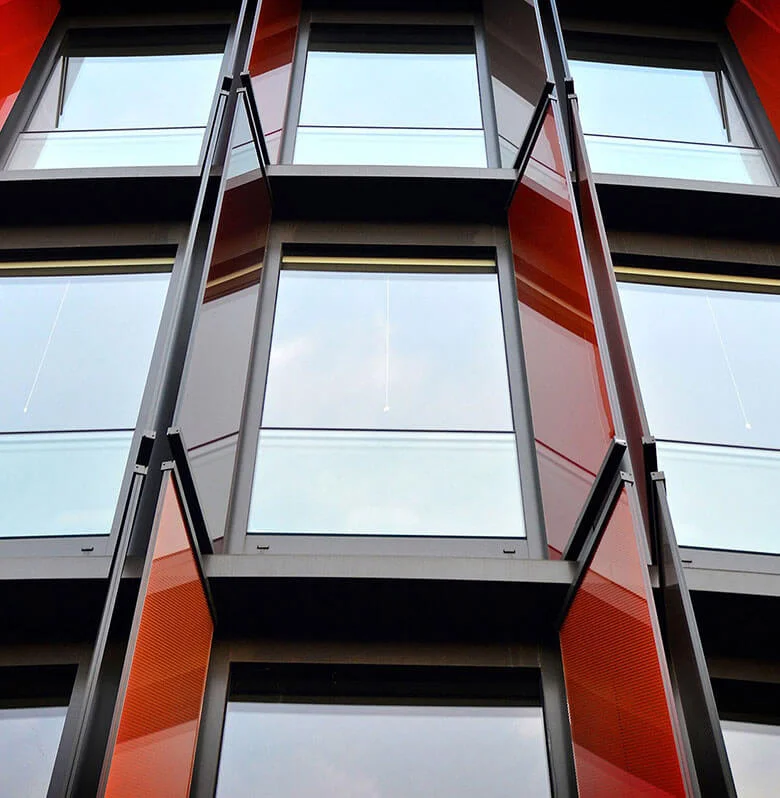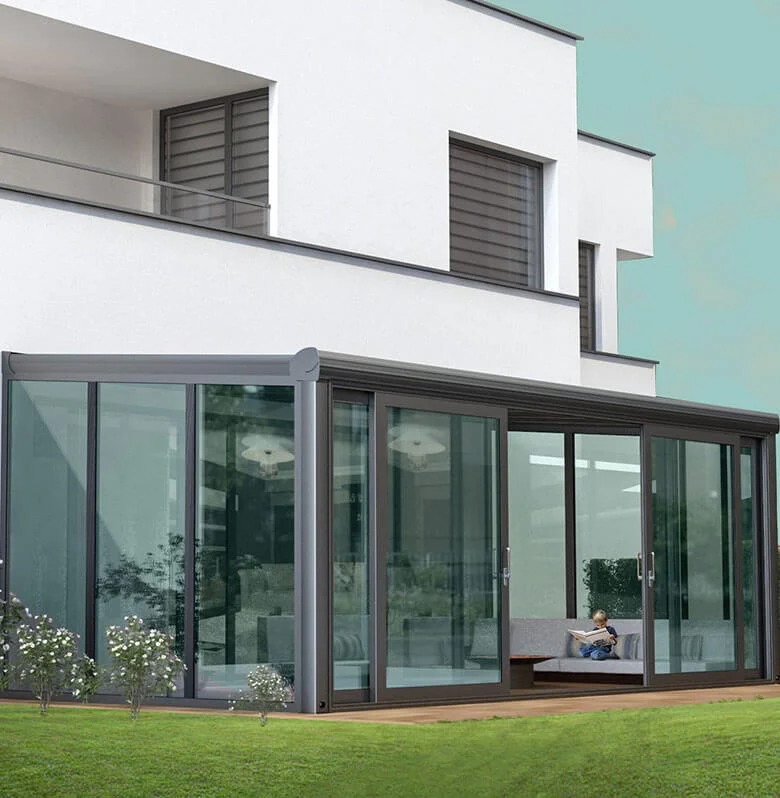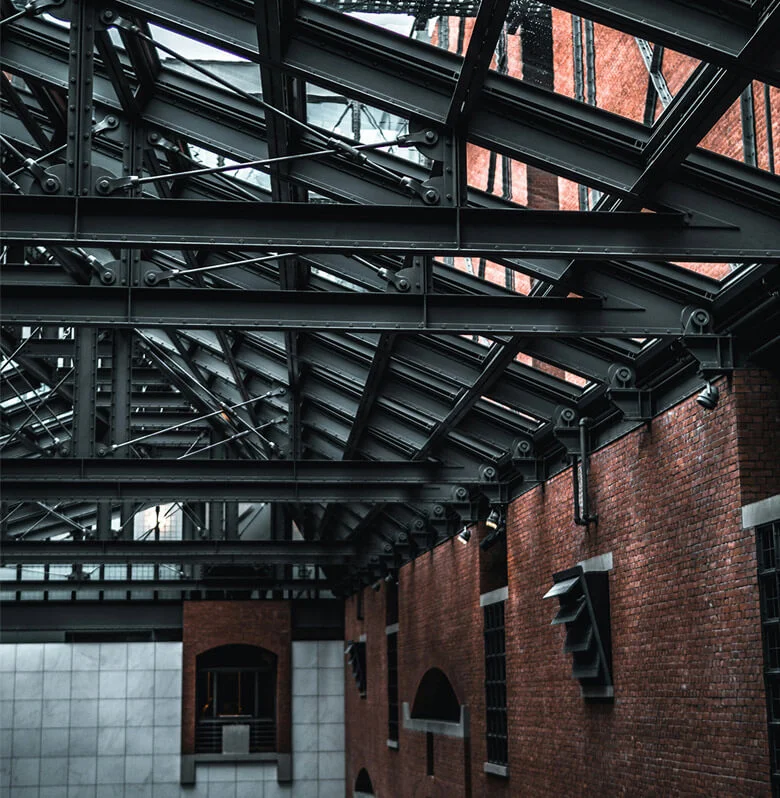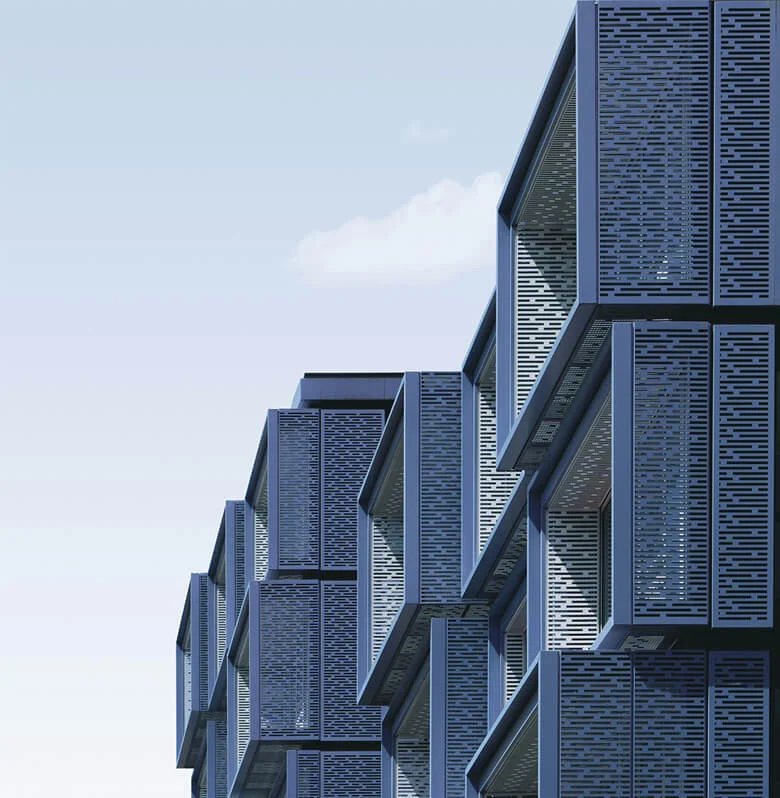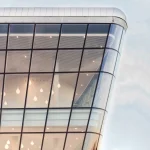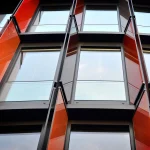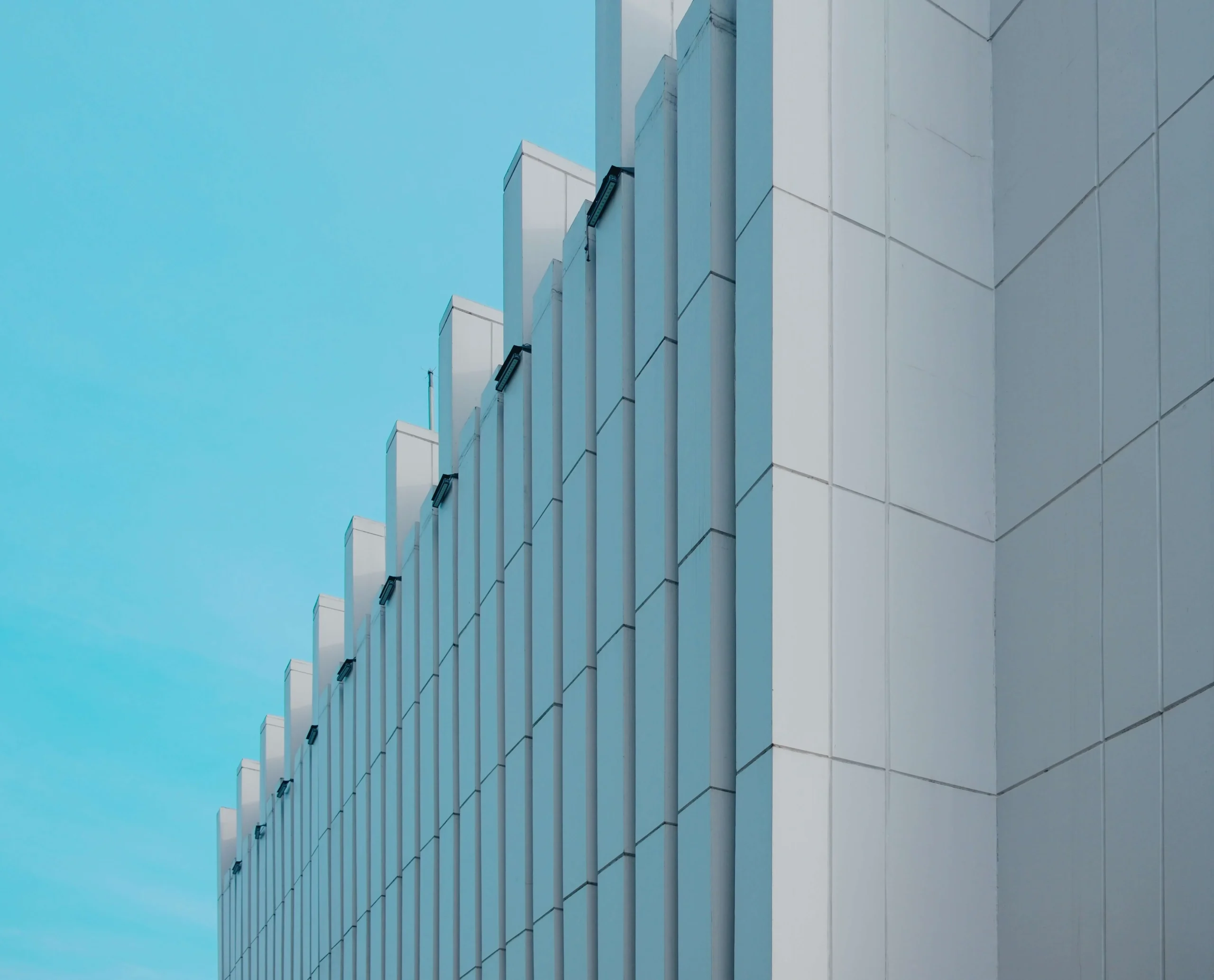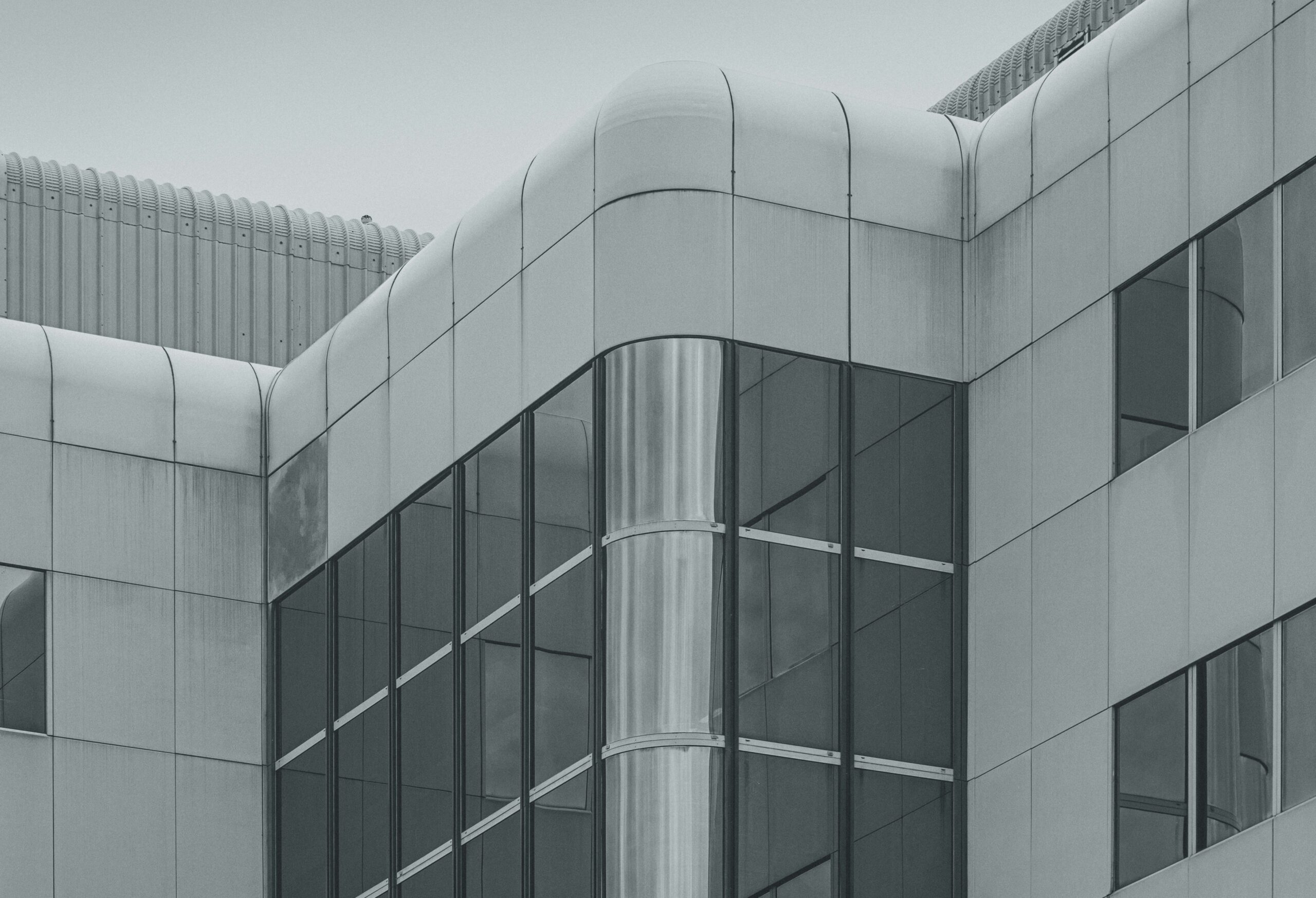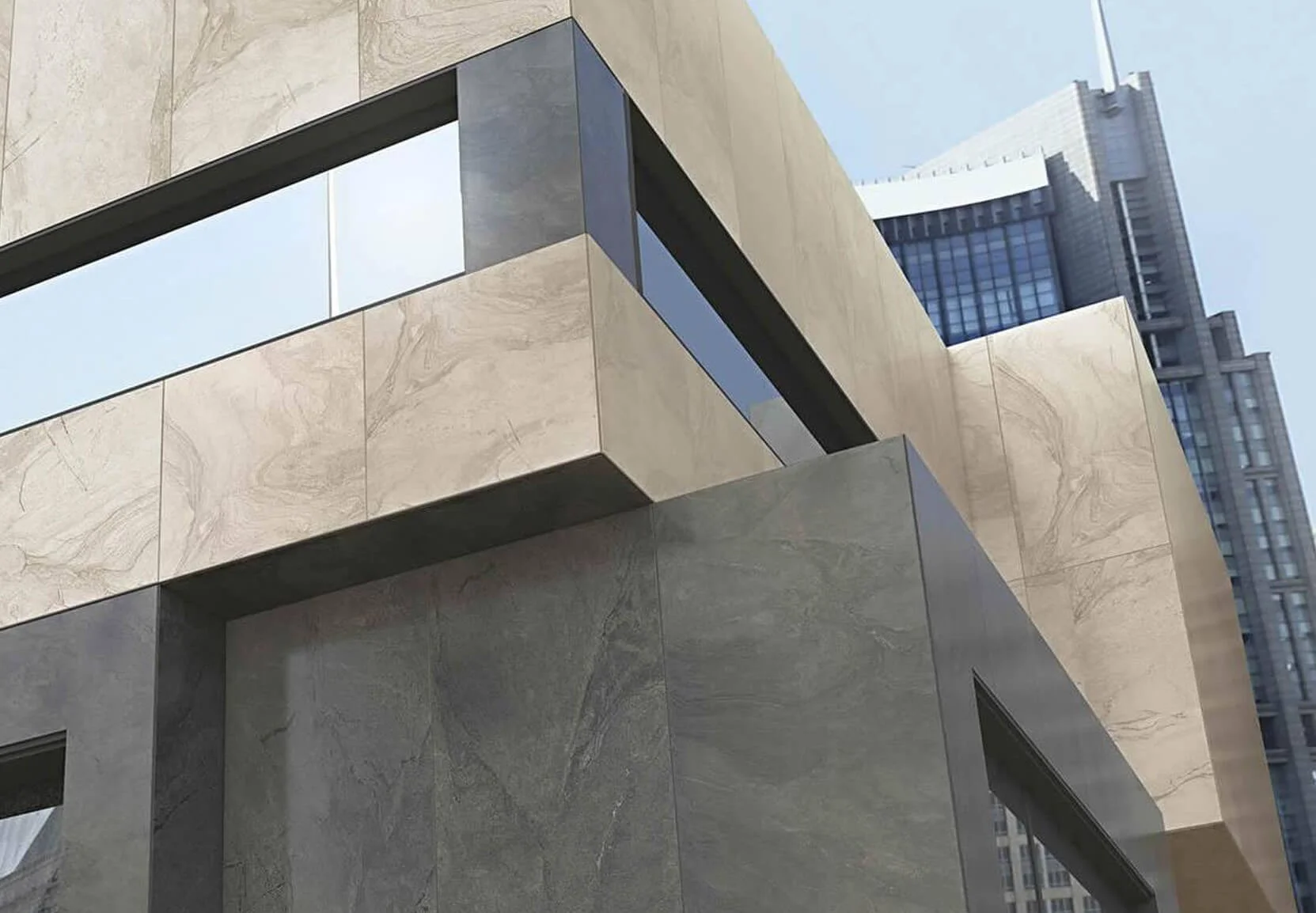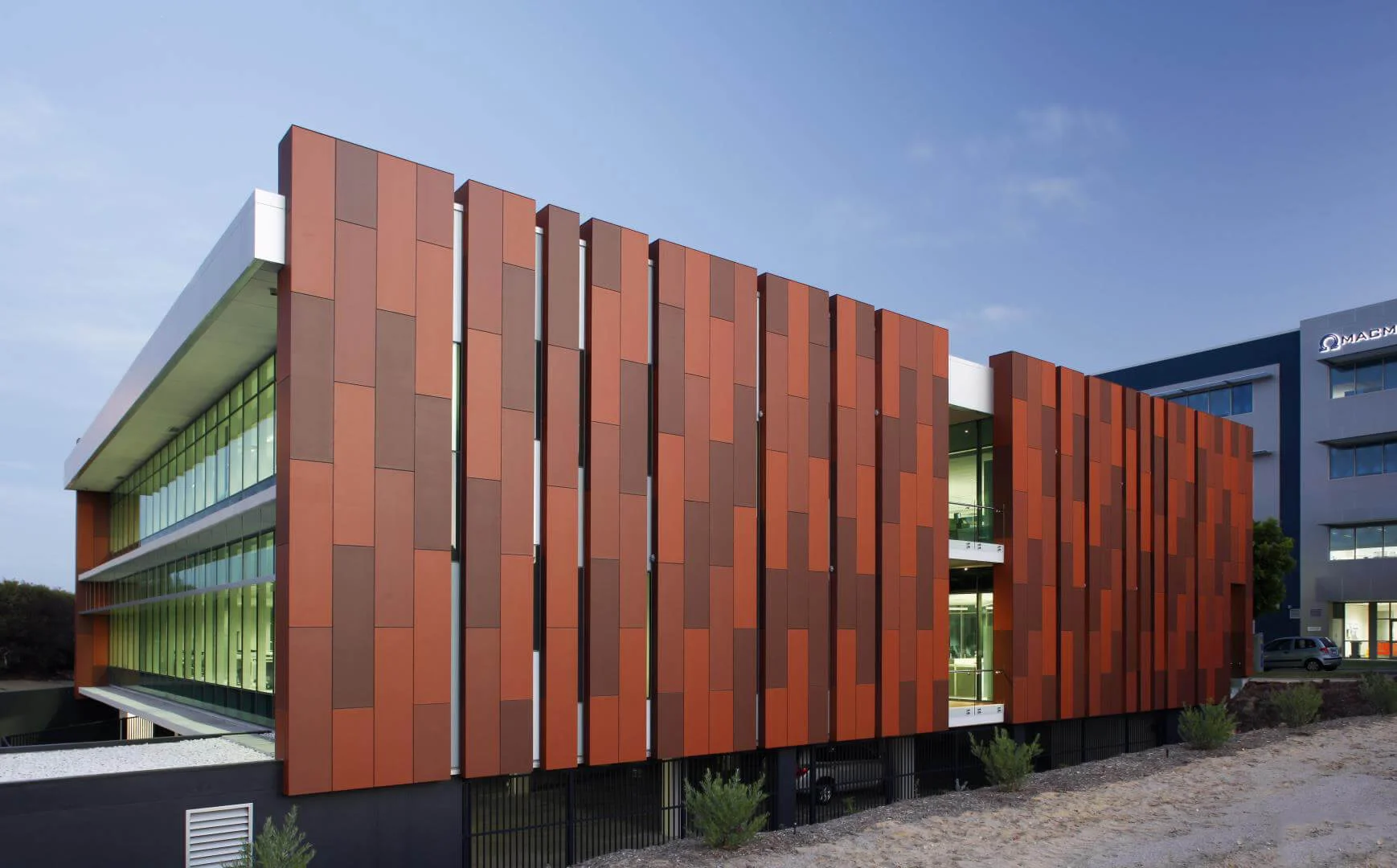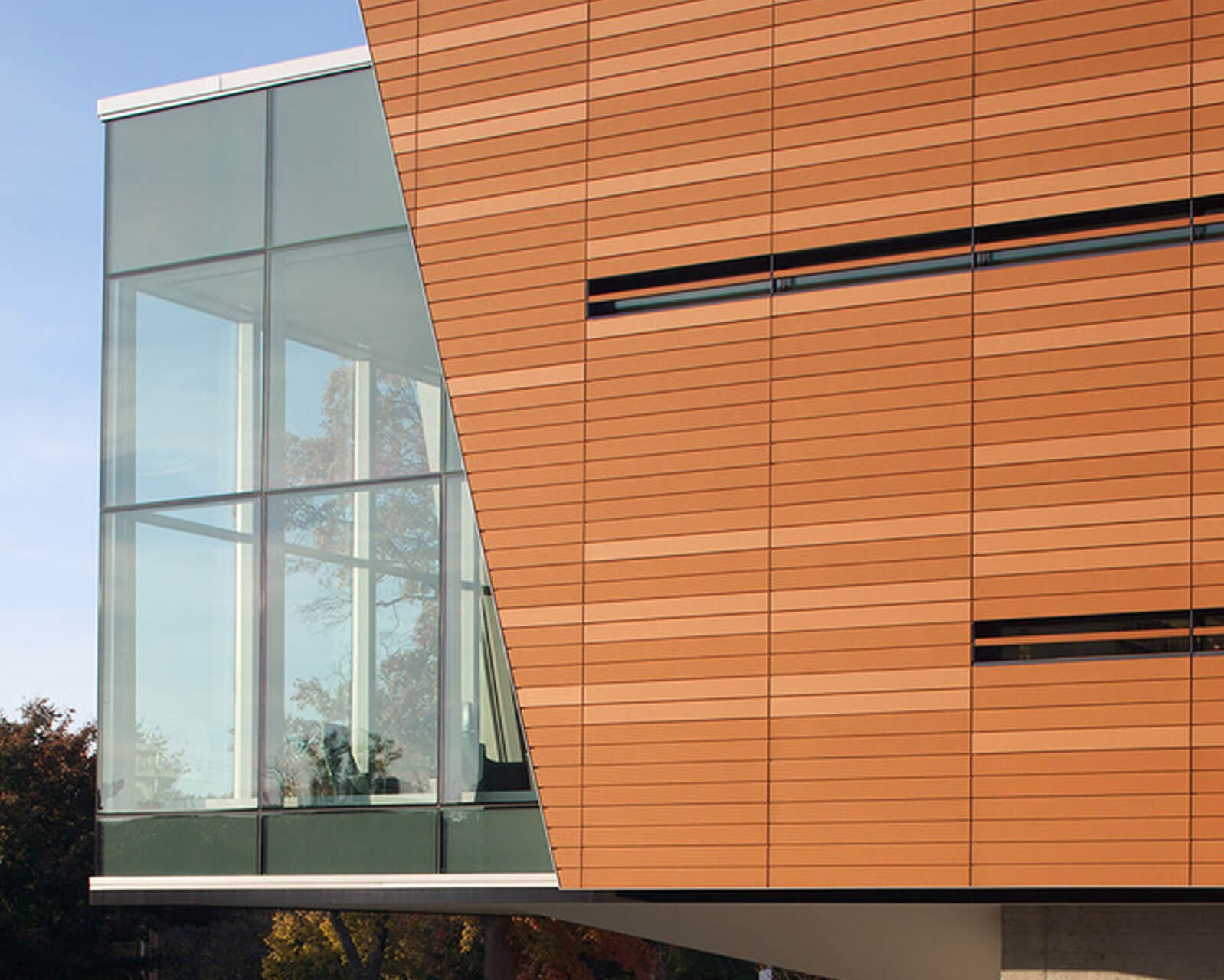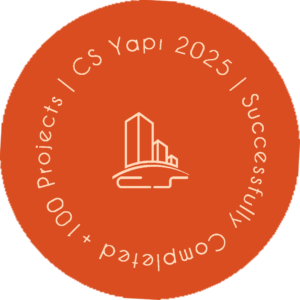Compact Laminates, specifically designed for exterior applications, particularly in curtain walls, are produced with technical differences during the manufacturing process, providing excellent compatibility with external facade conditions.
By using decorative papers that comply with DIN 54001 and ISO 4586/II standards on the surface, the material's resistance to light is ensured. Melamine and phenolic resins, mixed with special chemicals, enhance the material's durability against UV rays and outdoor conditions.
Depending on the design details, both adhesive and mechanical mounting system applications are available. Exterior compact laminates, which can be produced in 6 mm, 8 mm, and 10 mm thicknesses with double-sided surfaces, offer a wide variety of patterns as a natural material in facade designs. With guaranteed durability, colorfastness, and ease of application, they reflect limitless design possibilities.

